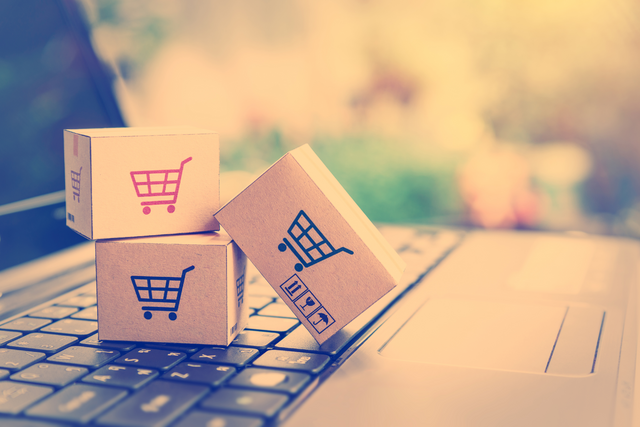Business
Theft-Proofing Retail: How TRACARTS Revolutionizes Cart Security

The problem of shopping cart theft is as old as the shopping cart itself. According to the Food Marketing Institute, approximately 2 million shopping carts are stolen or simply go missing every year, leading to substantial monetary losses for retailers that trickle down to the everyday consumer.
The escalating cost of living is a growing concern not only for consumers but also for retailers. While stolen carts may not be making regular headlines, they are a costly issue that threatens to worsen the economic strain that has already taken hold, with entire municipalities now getting involved in the missing cart problem.
Recently, the city of Fayetteville, North Carolina, earmarked $78,000 of taxpayer funds to tackle the cart problem and used the money to round up as many missing carts as possible over a two-year period. Albuquerque, New Mexico, ran a similar program, retrieving over 1,800 carts in just two months.
Missing and stolen carts create economic hardship, issues for consumers, and blight for cities. Thankfully, TRACARTS is a company stepping forward with a technology-informed solution, working to significantly reduce the number of carts that are stolen or otherwise go missing every year and save retailers time and money.
With each cart taken from a retailer, that retailer stands to lose upward of $180. Yet the millions of carts that go missing each year are a significant hit to not only the retailer but also the shoppers because when retailers seek to recoup funds lost due to missing and stolen carts, they are often forced to raise their prices.
TRACARTS has considered the human element of the cart problem with its system. In fact, the psychological aspect of the TRACARTS system is likely why it works so well.
“There are those retail stores that protect their carts by charging money from customers, who get a refund once their cart is returned,” says Chaya Grosinger, Chief Administrative Officer for TRACARTS. “In the U.S., this security measure is utilized with a quarter. If you wanted a cart, would you be willing to spend or lose 25 cents for a cart that costs upwards of $180?”
There is also an altruistic side to the cart problem that TRACARTS is leveraging. Recently, the question of whether one returns a cart after use has become a social media test of moral righteousness. The general consensus seems to be that “good people” return carts, while those who don’t face society’s harsh judgment.
This litmus test is part of TRACART’s multifaceted approach to solving the missing cart problem. TRACARTS is betting on the good feeling that comes from returning one’s cart.
Along with psychology, TRACARTS is also using technology to address the issue of missing and stolen carts. They know that the psychological pull of a “good deed” may not be sufficient to truly address this costly issue, so the solution must be multifaceted.
The user-friendly TRACARTS system makes it easy to track and secure shopping carts while they’re in use and when they are returned. The TRAC hub — a series of customizable shopping cart trains arranged in one, two, or three multidirectional lines — can be installed in any retail store’s parking lot. Strategic placement of the TRAC hub allows for easy access to the carts without having to weave through parked cars.
When the carts are not in use, the TRAC system locks them into place. They can be released through the system’s smart technology program, with the TRAC kiosk acting as the customer interface that dispenses or accepts them. Shoppers can use a White Label app, a fob, a PIN code, or a phone number, among various other identification forms, to release the carts.
Returning the carts is hassle-free. Shoppers simply place the carts back into the TRAC hub without further interaction with the kiosk.
The integration of smart technology is another facet of the TRACARTS system that makes it stand apart from other solutions. It provides retailers with valuable data analytics and ways to engage with their shoppers. TRAC dashboard is entirely customizable, allowing it to meet the specific needs of different retailers depending on what date they are interested in collecting. Shoppers are incentivized to return their carts and given access to special promotions, such as VIP discounts and rewards, culminating in a positive shopping experience for both the shopper and the retailer while also gamifying the cart return process.
While the issue of stolen and missing carts will not vanish overnight, TRACARTS is deploying advanced technology, social consciousness, and psychology to help retailers save time and money. As more retailers realize that this problem will not simply go away on its own, they will turn to solutions like TRACARTS to help them manage their cart inventory and make shopping at their stores a more pleasant experience.
Business
Inside the $4.3B Quarter: What’s Fueling Black Banx’s Record Revenues

Every quarter brings fresh headlines in fintech, but few make the kind of impact achieved by Black Banx in Q2 2025. The Toronto-based global digital banking group, founded by Michael Gastauer, reported an extraordinary USD 4.3 billion in revenue and a record USD 1.6 billion in pre-tax profit, while improving its cost-to-income ratio to 63%.
These results not only highlight the company’s operational efficiency but also mark a pivotal moment in its journey from challenger to global leader. The big question is: what’s fueling such impressive financial performance?
Customer Growth as the Core Driver
One of the clearest engines of revenue growth is Black Banx’s expanding customer base. By Q2 2025, the platform had reached 84 million clients worldwide, up from 69 million at the end of 2024. This 15 million net gain in six months demonstrates both the attractiveness of its services and the scalability of its model.
Unlike traditional banks, which rely heavily on branch expansion, Black Banx leverages digital-first onboarding that allows customers to open accounts within minutes using just a smartphone. This approach is especially effective in regions underserved by legacy institutions, where access to affordable financial tools is in high demand.
More customers don’t just mean higher transaction volumes—they generate a compounding effect where network size, brand trust, and service adoption reinforce one another.
Real-Time Payments and Cross-Border Solutions
A major contributor to Q2 revenues is the platform’s real-time payments infrastructure. Black Banx enables instant cross-border transfers across its 28 supported fiat currencies and multiple cryptocurrencies, helping both individuals and businesses bypass the traditional bottlenecks of international banking.
For freelancers, SMEs, and multinational clients, this means faster liquidity, reduced foreign exchange costs, and simplified global operations. The demand for real-time financial services is growing rapidly—Juniper Research projects global real-time payments turnover to hit USD 58 trillion by 2028—and Black Banx is strategically positioned to capture a significant share of this market.
Crypto Integration as a Revenue Stream
Another key revenue driver is crypto integration. While many traditional institutions remain hesitant, Black Banx embraced digital assets early and has built infrastructure to support Bitcoin, Ethereum, and the Lightning Network. In Q2 2025, 20% of all transactions on the platform were crypto-based, reflecting strong customer appetite for hybrid banking services that bridge fiat and digital assets.
Revenue comes not only from transaction fees but also from value-added services like crypto-to-fiat conversion, staking yields (4–12% APY), and blockchain-enabled payments. For customers in markets with unstable currencies, these services act as a financial lifeline, further expanding the platform’s relevance.
AI-Powered Efficiency and Risk Management
Record revenues would be less impressive if costs ballooned at the same rate. But Black Banx has proven adept at balancing growth with efficiency. Its cost-to-income ratio improved to 63% in Q2, down from 69% a year earlier, thanks to heavy reliance on AI-powered automation.
AI now drives fraud detection, compliance, and customer onboarding—areas where traditional banks often struggle with cost inefficiencies. By automating these processes, Black Banx can process millions of transactions securely while maintaining profitability at scale. This level of efficiency is rare in fintech, where high growth often comes at the expense of margins.
Regional Expansion and Untapped Markets
Geography also plays a role in fueling revenues. Much of the Q2 growth came from Africa, South Asia, and Latin America—regions where demand for mobile-first banking continues to soar. In 2024 alone, Black Banx reported a 32% increase in SME clients from the Middle East and Africa, signaling the strength of its positioning in underserved markets.
By extending services to populations previously excluded from formal banking—migrant workers, rural communities, and small businesses—Black Banx taps into vast pools of latent demand. The strategy proves that financial inclusion and profitability are not mutually exclusive but mutually reinforcing.
Diversified Revenue Streams
Another factor behind Q2’s record revenues is Black Banx’s diversified business model. Income is not tied to a single service but spread across multiple streams, including:
- Transaction fees from cross-border transfers and payments.
- Crypto trading and exchange services.
- Premium account features for high-net-worth clients.
- Corporate services for SMEs and international businesses.
This diversification insulates the company against volatility in any single segment, creating stable revenue growth even in shifting market conditions.
Michael Gastauer’s Strategic Blueprint
Behind these results is Michael Gastauer’s long-term strategy: scale aggressively but with efficiency, innovation, and inclusion at the core. His vision has always been to create a borderless financial ecosystem, and Q2 2025’s performance is evidence that this vision is not only achievable but sustainable.
By balancing mass-market accessibility with premium features, and by blending fiat with digital assets, Gastauer has positioned Black Banx as a category-defining player in global finance.
The Road Ahead: Toward 100 Million Clients
Looking forward, the company’s goal of reaching 100 million customers by the end of 2025 will likely be the next catalyst for revenue growth. More customers mean more transactions, more data insights, and more opportunities to refine and expand its service offering.
If current momentum holds, the USD 4.3 billion quarterly revenue milestone could be just the beginning of an even larger growth story. The challenge will be ensuring systems scale securely while maintaining trust in an environment where privacy and compliance are paramount.
A Record That Signals More to Come
Black Banx’s Q2 2025 performance—USD 4.3 billion in revenue, USD 1.6 billion in pre-tax profit, 84 million clients worldwide, and a lean 63% cost-to-income ratio—is more than a financial milestone. It is a signal of how the future of banking is being rewritten by platforms that are borderless, crypto-inclusive, and data-driven.
What fueled this record-breaking quarter is not one innovation but a combination of strategies—scalable onboarding, real-time payments, crypto integration, AI efficiency, and expansion into underserved regions. Together, they form a model that doesn’t just challenge traditional banking but actively builds the foundation for global dominance.
For Black Banx, the road ahead is clear: the $4.3 billion quarter is not an endpoint but a launchpad for even greater scale and profitability.
-

 Tech5 years ago
Tech5 years agoEffuel Reviews (2021) – Effuel ECO OBD2 Saves Fuel, and Reduce Gas Cost? Effuel Customer Reviews
-

 Tech6 years ago
Tech6 years agoBosch Power Tools India Launches ‘Cordless Matlab Bosch’ Campaign to Demonstrate the Power of Cordless
-

 Lifestyle7 years ago
Lifestyle7 years agoCatholic Cases App brings Church’s Moral Teachings to Androids and iPhones
-

 Lifestyle5 years ago
Lifestyle5 years agoEast Side Hype x Billionaire Boys Club. Hottest New Streetwear Releases in Utah.
-

 Tech7 years ago
Tech7 years agoCloud Buyers & Investors to Profit in the Future
-

 Lifestyle5 years ago
Lifestyle5 years agoThe Midas of Cosmetic Dermatology: Dr. Simon Ourian
-

 Health7 years ago
Health7 years agoCBDistillery Review: Is it a scam?
-

 Entertainment6 years ago
Entertainment6 years agoAvengers Endgame now Available on 123Movies for Download & Streaming for Free
